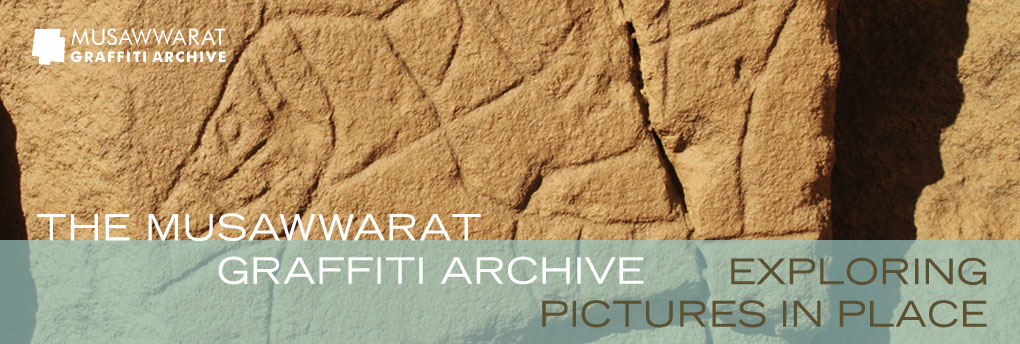
Welcome to the Musawwarat Graffiti Archive
Musawwarat es-Sufra, located in Sudan, is one of the most intriguing archaeological heritage sites on the African continent. As part of the group entry ‘Archaeological sites of the Island of Meroe’ Musawwarat is one of the recent additions to UNESCO’s World Heritage List. The temples and other monuments at the site date primarily to the Meroitic period (c. 270BC-AD350) of the kingdom of Kush, one of Africa’s major early states, which formed an interface between ancient Africa, Egypt, the Greco-Roman Mediterranean and the Near East.
Traces of the movement and transformation of ideas and knowledge within the ancient world are manifest in the thousands of graffiti that were incised over more than 2000 years into the walls of the so-called Great Enclosure, a unique, labyrinthine building complex forming the centre of the site. This multi-layered archive of images, inscriptions and markings reflects various aspects of the ever changing life-worlds of the people of the past. It also forms a treasure trove for present seekers of knowledge, be they researchers or members of the interested global public.
The Musawwarat Graffiti Project, led by Dr. Cornelia Kleinitz at Humboldt-Universität zu Berlin, has been dedicated to the study of this exceptionally diverse graffiti corpus since 2007. The Musawwarat Graffiti Archive, a cooperation project between the Max Planck Institute for the History of Science and Humboldt-Universität, is presenting - bit by bit - research results as well as research data on the entire graffiti corpus in an interactive open access research archive that has the 'Graffiti in Place Database' at its core. The Archive is dedicated to the digital preservation, publication and promotion of African cultural heritage.








